SEGMENTS AND THEIR MEASURES
Subscribe to our ▶️ YouTube channel 🔴 for the latest videos, updates, and tips.
In geometry, rules that are accepted without proof are called postulates or axioms. Rules that are proved are called theorems. In this section, we are going to study two postulates about the lengths of segments.
Postulate 1 (Ruler Postulate)
The points on a line can be matched one to one with real numbers. The real number that corresponds to a point is the coordinate of the point.
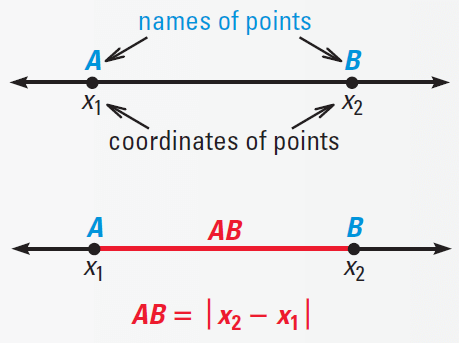
The distance between points A and B, written as AB, is the absolute value of the difference between the coordinates of A and B.
AB is also called the length AB.
Example (Postulate 1) :
Measure the length of the segment to the nearest millimeter.

Solution :
Use a metric ruler.
Align one mark of the ruler with A, then estimate the coordinate of B.
For example, if we align A with 3, B appears to align with 5.5 as shown below.

Now, we have
AB = |5.5 - 3| = |2.5| = 2.5
The distance between A and B is 2.5 cm.
Note :
It does not matter, how we place the ruler.
For example, if the ruler in the above example is placed such that A is aligned with 4, then B aligns with 6.5. The difference in the coordinates is same.
That is,
AB = |6.5 - 4| = |2.5| = 2.5
Postulate 2 (Segment Addition Postulate)
If B is between A and C, then, we have
AB + BC = AC.
(or)
If AB + BC = AC, then B is between A and C.
It has been illustrated in the picture given below.
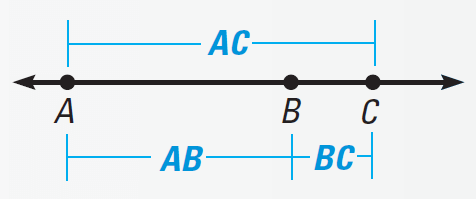
Example (Postulate 2) :
Use the map to find the distances between the three cities that lie on a line.
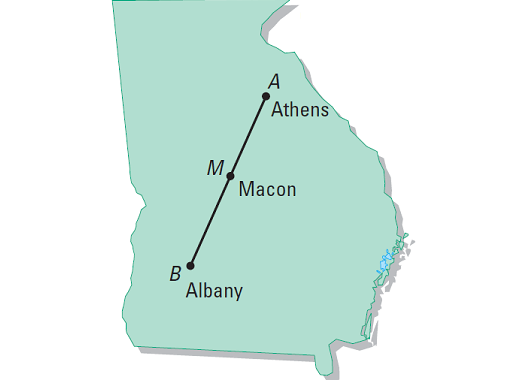
Solution :
Using the scale on the map, we can estimate that the difference between Athens and Macon is
AM = 80 miles
The distance between Macon and Albany is
MB = 90 miles
It has been explained in the picture given below.
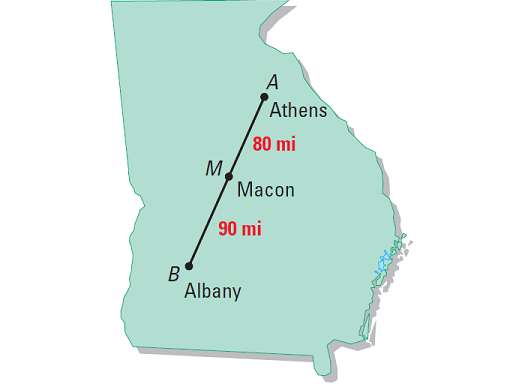
Knowing that Athens, Macon and Albany lie on the same line, we can use the Segment Addition Postulate to conclude that the distance between Athens and Albany is
AB = AM + MB
AB = 80 + 90
AB = 170 miles
It has been explained in the picture given below.
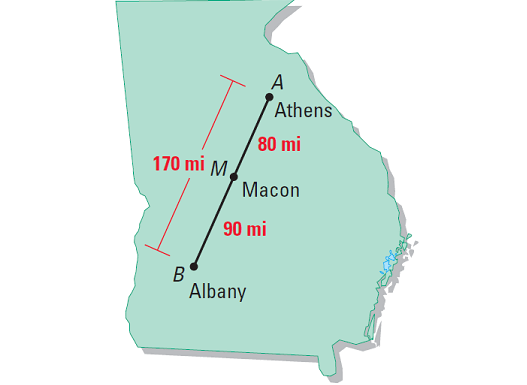
Reflect (Segment Addition Postulate)
The Segment Addition Postulate can be generalized to three or more segments, as long as the segments lie on a line. If P, Q, R and S lie on a line as shown, then
PS = PQ + QR + RS
It has been explained in the picture given below.

Subscribe to our ▶️ YouTube channel 🔴 for the latest videos, updates, and tips.
Kindly mail your feedback to v4formath@gmail.com
We always appreciate your feedback.
About Us | Contact Us | Privacy Policy
©All rights reserved. onlinemath4all.com

Recent Articles
-
US Common Core K-12 Curricum Algebra Solving Simple Equations
Jan 06, 26 04:54 AM
US Common Core K-12 Curricum Algebra Solving Simple Equations -
10 Hard SAT Math Questions (Part - 4)
Jan 05, 26 06:56 PM
10 Hard SAT Math Questions (Part - 4) -
10 Hard SAT Math Questions (Part - 3)
Jan 05, 26 06:34 PM
10 Hard SAT Math Questions (Part - 3)

